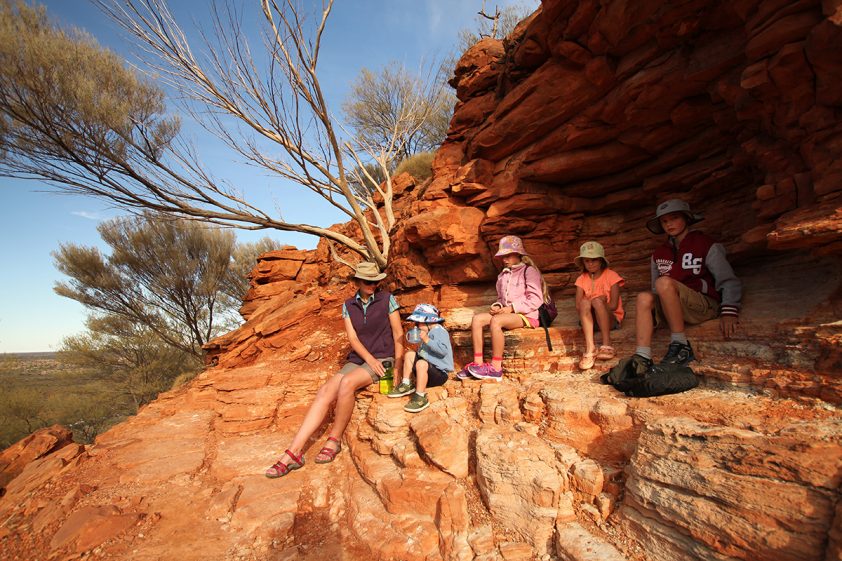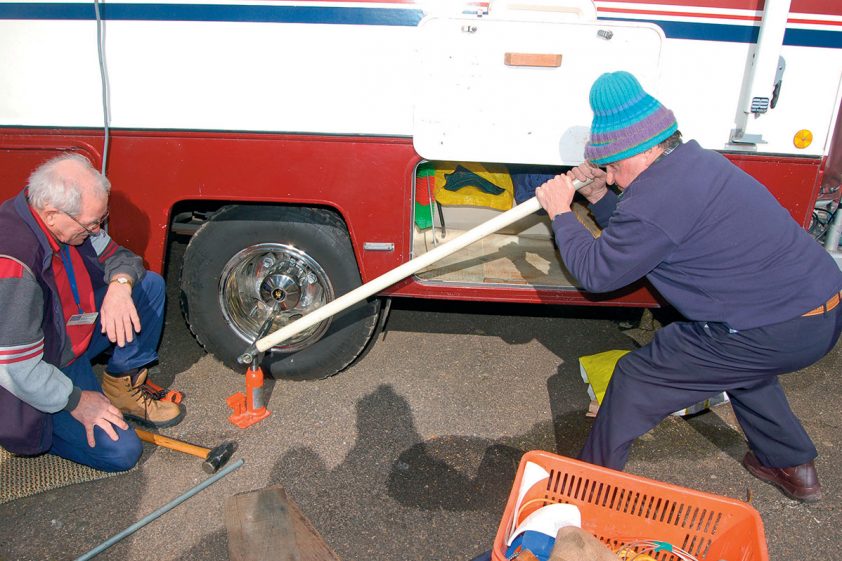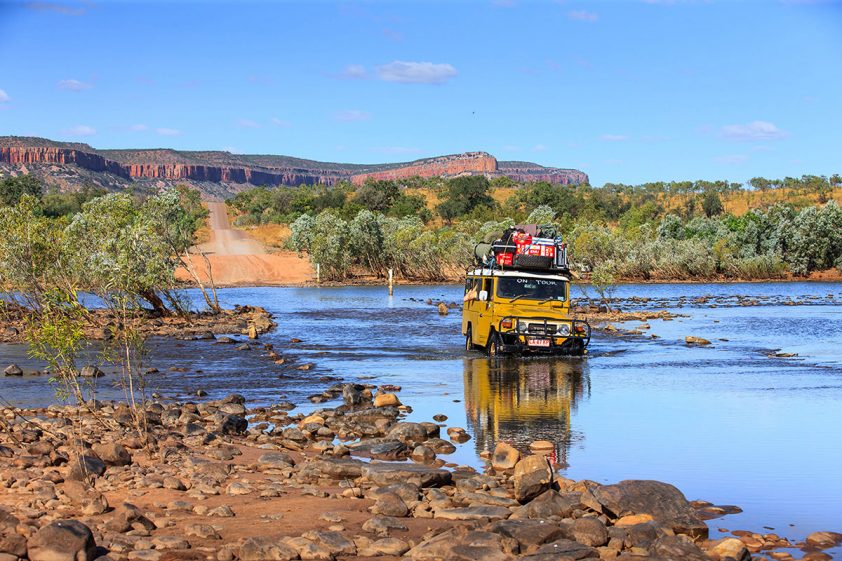Exploring our magnificent continent is an adventure of epic proportions that should appear on every bucket list – whether you’re single, have a partner or a family. Australia has so much to offer – from the World Heritage-listed tropical rainforests to the vast outback, the awe-inspiring Kimberley to deserted white beaches, the list of breathtaking destinations is never-ending.
Hitting the road with a family in tow is easier said than done though. You don’t just jump in the car, throw in a couple of items and off you go. If only it were that easy. Travelling with kids requires careful planning. Believe me, most of the work needs to be done before you bundle everyone into the vehicle and drive off into the sunset.
So here are my tried-and-tested tips for taking a family of six around the country.
1. PLANNING
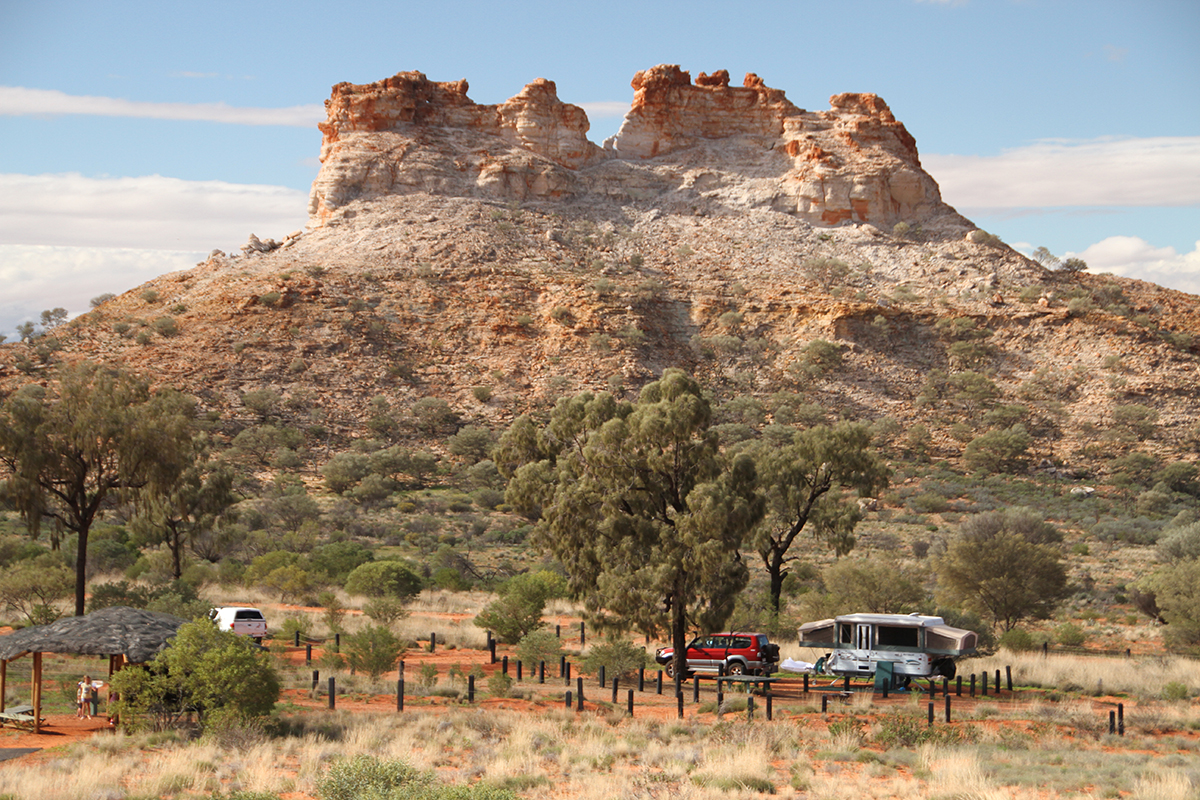
This is the exciting part! Grab your Camps Australia book and start dreaming!
What time of year are you hoping to head off? If you take off in January or February, Tasmania is the place to go. But if you’re starting your trip in the middle of the year, you’ll want to make a beeline for warmer weather. The great bonus of living in Australia is that you can always find a place where it’s going to be nice and warm, regardless of the time of year. You just don’t want to set up camp in Darwin or Broome when the wet season is about to arrive.
Think about where you want to camp. Most travellers prefer to mix bush camping and caravan parks. Bush camps tend to be cheaper, quieter (not always though) and there is usually more room for the kids to roam around. You will need to stay at a caravan park from time to time so you have access to a washing machine and some of the other comforts like a long, hot shower or even a swimming pool.
2. ITINERARY
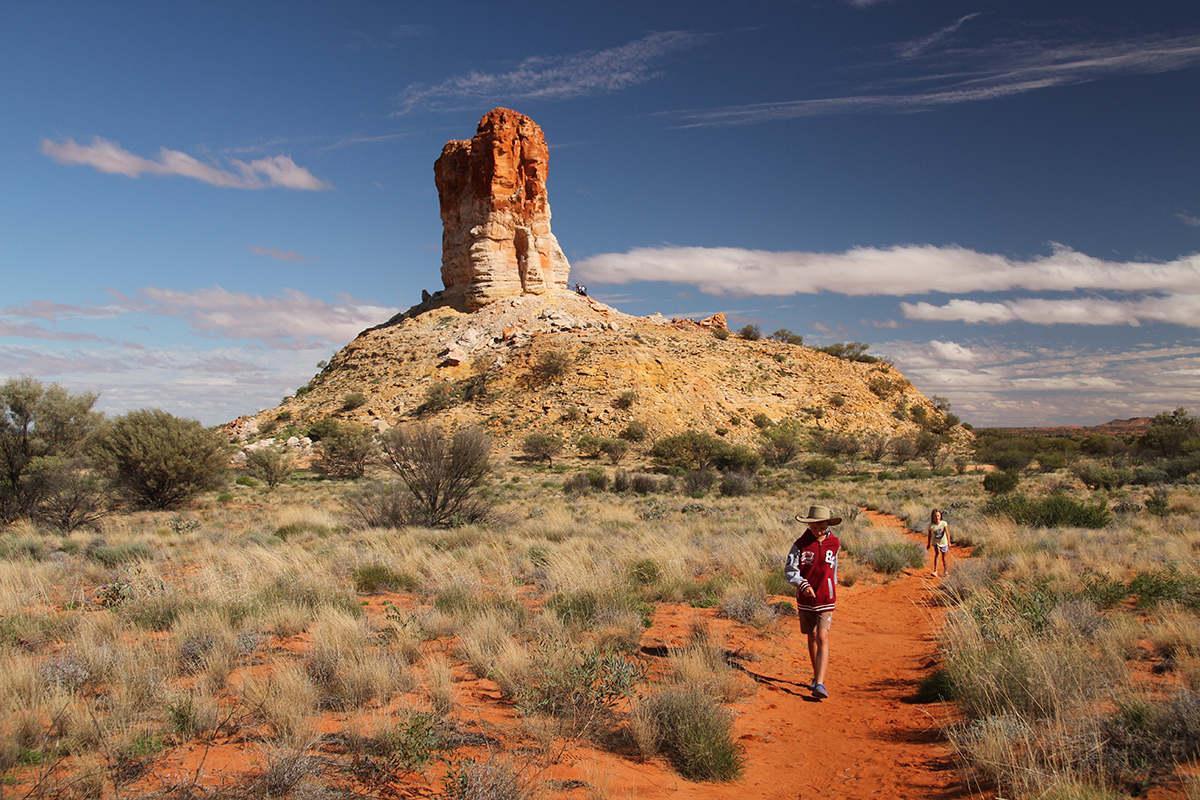
Some people love to be spontaneous and take it one day at a time. This approach might work okay but when you’re trying to find a campsite in Alice Springs, Darwin, Kununurra or Broome when the rest of Australia has swamped these towns, it can be a challenge. I recommend booking these places in advance to avoid disappointment.
Australia is a massive country and there’s no way you can see everything, even though some families try. Rushing from one destination to the next does not equal a relaxing and enjoyable trip, take it from someone who’s seen too many families racing around without appreciating the experience.
Give each family member a choice of five must-see spots and work them into your itinerary. Allow sufficient time to soak up these bucket list destinations so you can savour the memories. Trust me, two days at Uluru is not enough to appreciate its grandeur and five days touring the Kimberley does not do justice to this awe-inspiring region.
3. BUDGETING
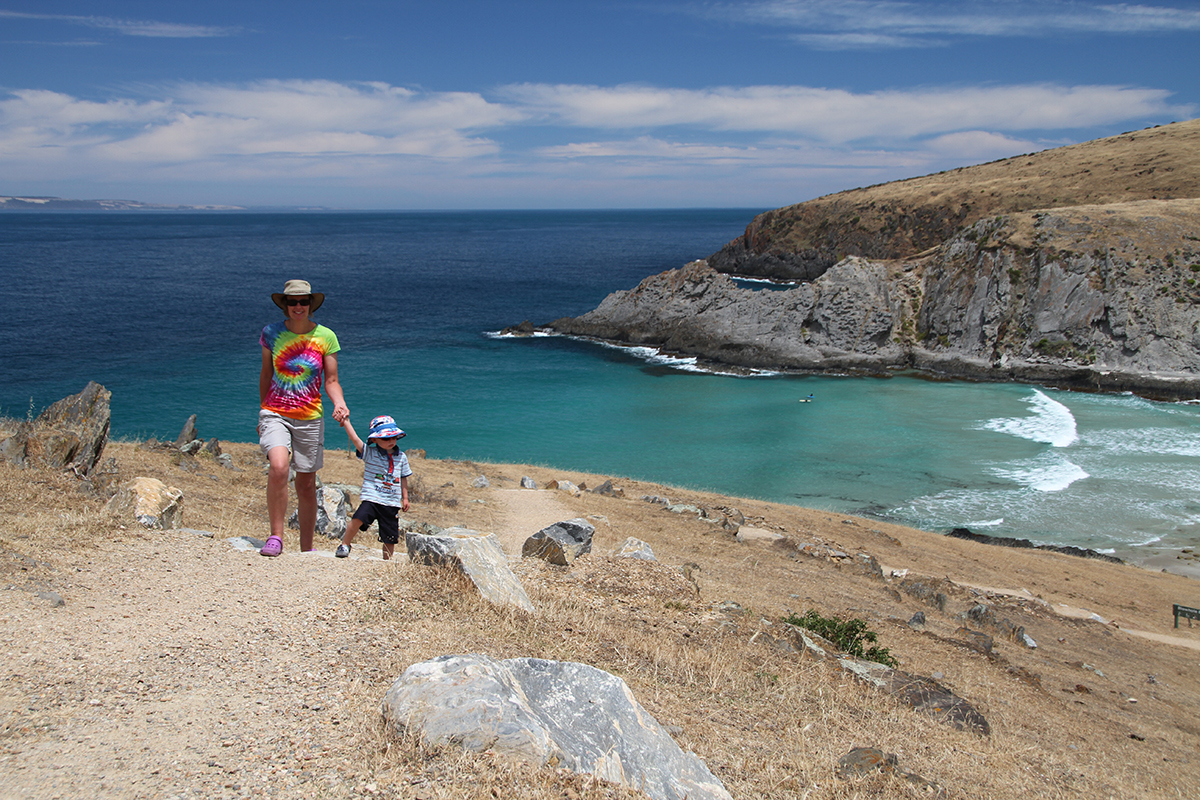
The big question I am often asked is: how much money do I need for the ‘Big Lap’? The final figure depends on a lot of things, so let me run through six items.
Fuel
Once you’ve come up with a rough itinerary you can work out the kilometres to arrive at a fuel estimate. Bear in mind that your fuel economy will be affected by the size of your rig, your average speed and the type of road (bitumen or dirt). The cost of fuel is going to be dearer in remote locations, so allow for this.
Accommodation
You can check the prices of most bush and caravan sites online to get a pretty good idea of how much accommodation is going to cost for the entire trip. If you’re planning on staying in caravan parks a lot, you might want to consider purchasing caravan park memberships as this will save you a considerable amount.
Food
It really depends on what type of meals you’re going to have. You probably know how much you spend on groceries at home so this figure is a good starting point. However, expect to pay more for food items in the outback.
Activities
Activities is an interesting one. Some families are willing to pay for entry fees to lots of different places while others stick with free entertainment – it’s really up to you. Maybe you’ve always wanted to see Uluru from the air, so make sure you find out the price of a helicopter flight and budget it in.
Expenses
Home expenses are fairly straightforward. Mortgage repayments/rent, utilities bills and any other predictable expenses must be included to arrive at a realistic budget.
Maintenance
Always plan for the unexpected: car repairs are unfortunately inevitable and you don’t want to skimp on necessary repairs because you could end up in some pretty sticky situations. If it needs fixing, fix it.
4. PACKING
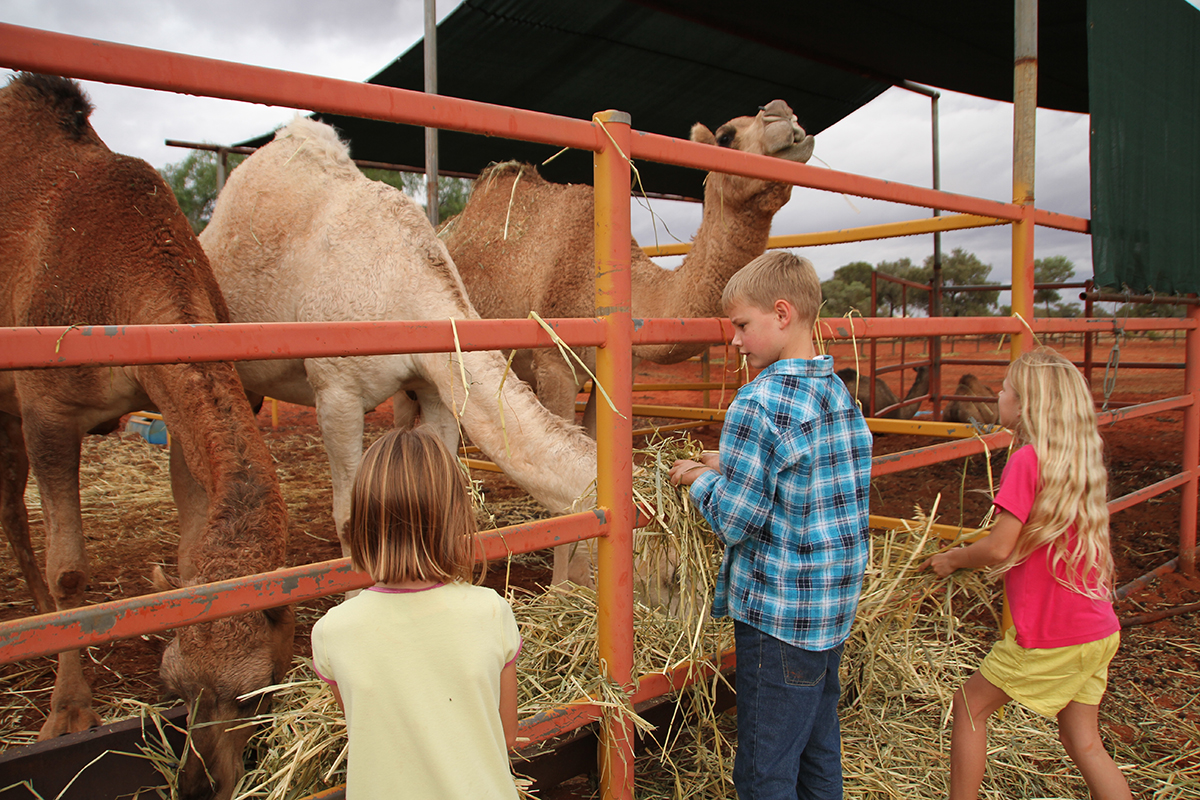
My advice is simple: be ruthless. Reality is, you don’t need a lot of stuff for a trip around Australia. Sure, you need clothes for each season but it isn’t necessary to bring your entire wardrobe. Bring comfortable clothing and items that dry quickly and pack easily. Bring clothes that can be layered so you can just grab a fleece jacket if you’re cold. Avoid jeans unless you can’t live without them and don’t worry about fancy outfits – you probably won’t wear them.
Shoes are another biggie, especially when you have two, three or more kids. Imitation crocs are great for any climate and they can be cleaned easily. One good pair of walking shoes is essential if you’re into bushwalking. Attempting the King’s Canyon Rim Walk in flip-flops is not recommended.
5. SCHOOLING
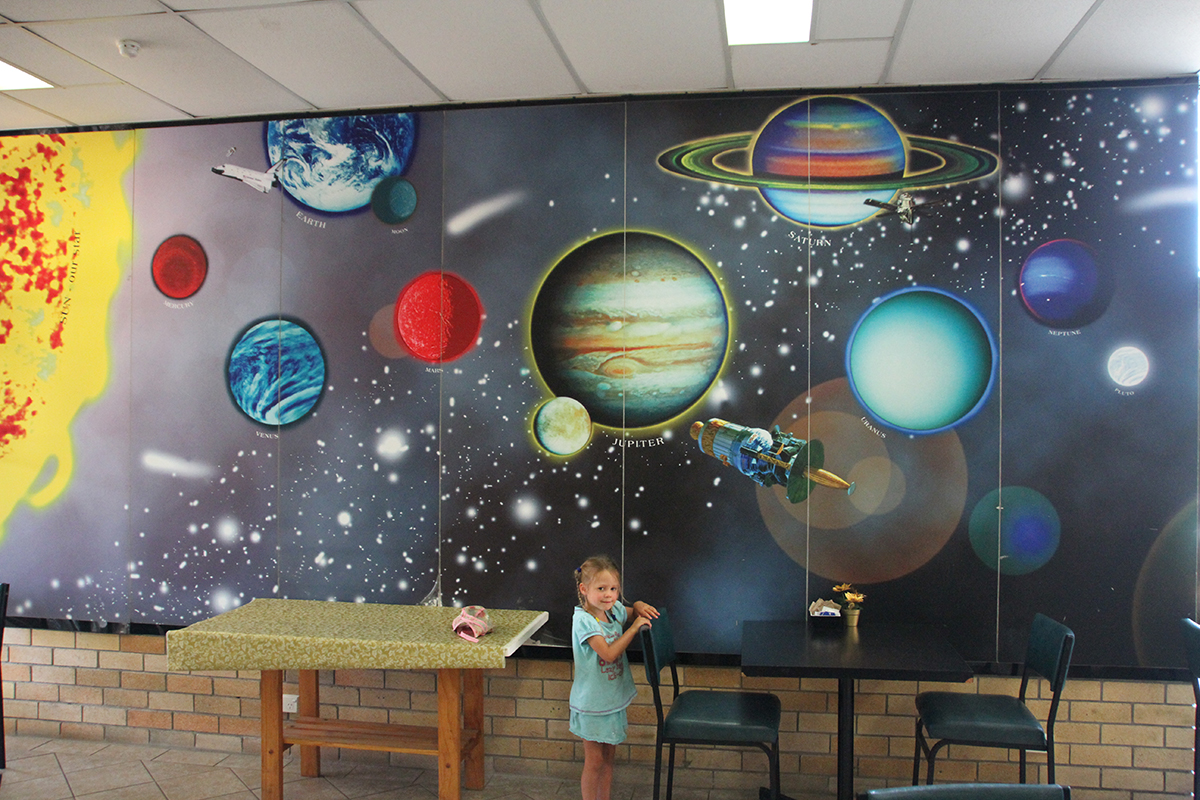
Many parents dread taking their kids on the ‘Big Lap’ because they fear their offspring will fall behind with schoolwork. Nothing could be further from the truth. Real life in the real world is the best classroom for any kid of any age. Learning about camels while riding one is far more beneficial than sitting in a classroom reading a book about an animal you’ve never seen before. Counting kangaroos is undoubtedly more fun than counting blocks. Spotting a platypus or a wombat instead of trying to memorise the biology book is way more interesting.
My kids still talk about our many adventures, the places they’ve seen, the animals they encountered, the people they met. There is no substitute for hands-on learning.
Don’t get me wrong, you do need to make sure you meet the educational requirements for your kids whether it is through Distance Education, homeschooling or an arrangement with the school. There is plenty of information on the internet to help you make an informed decision.
This article comes courtesy of Caravan World.
MEET THE AUTHOR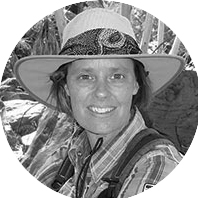
Claudia Bouma
Claudia has had a passion for travelling and writing for as long as she can remember. In 2009, she hit the road for two years with her photographer husband Chris and their three kids to explore this amazing country with camper in tow.
Now a mother of four, Claudia and Chris try to take the kids camping as often as possible.
She lists the Flinders Ranges, SA, as her favourite place to travel – “simply because I can never get enough of the dramatic and breathtaking scenery,” she said.

